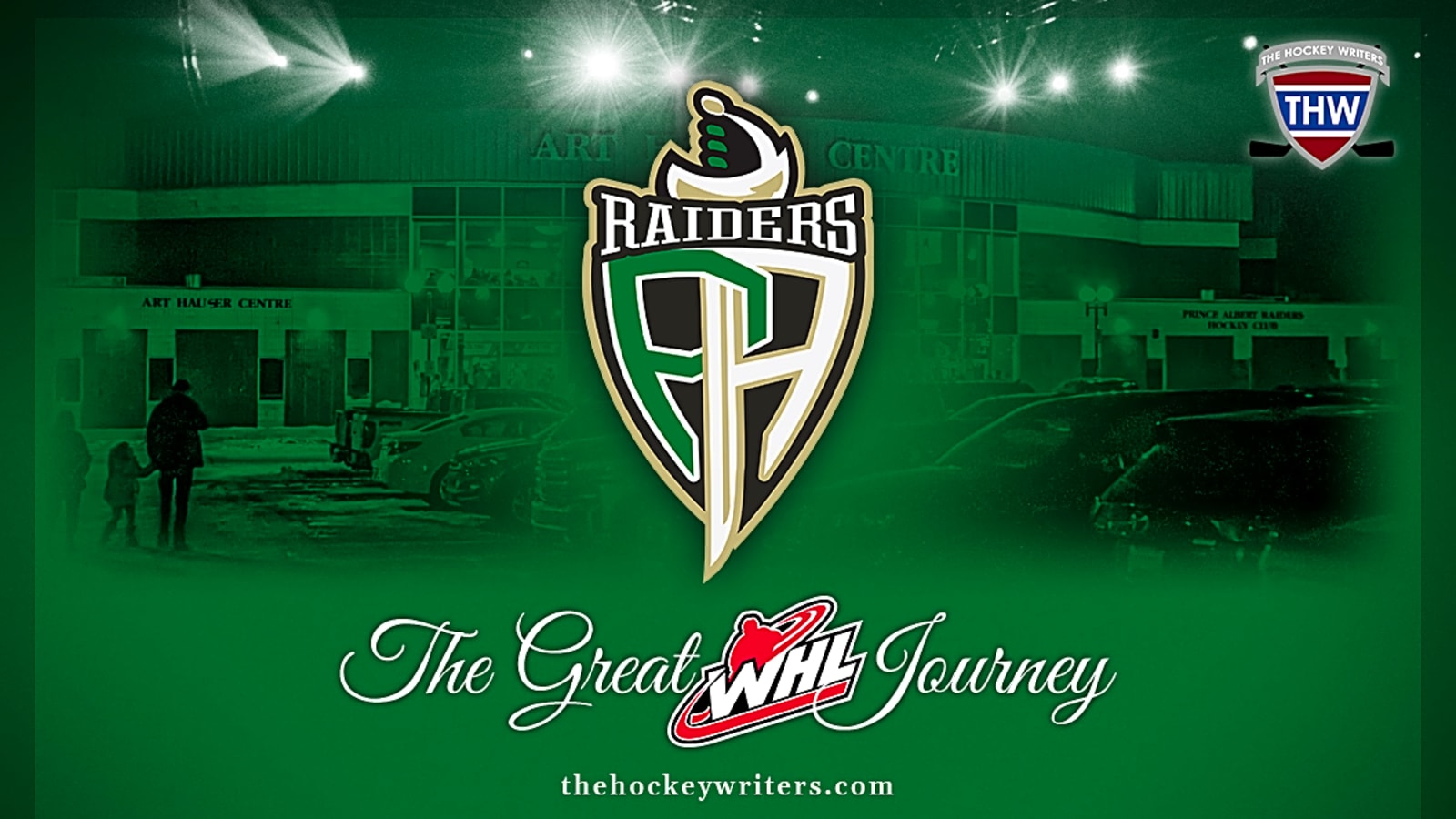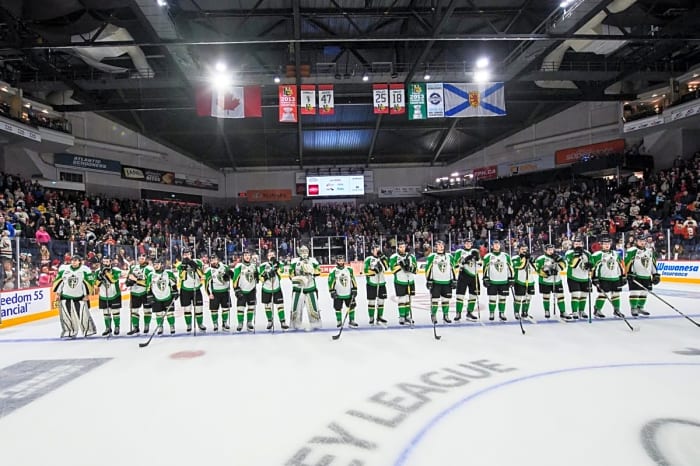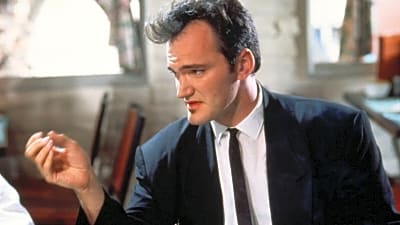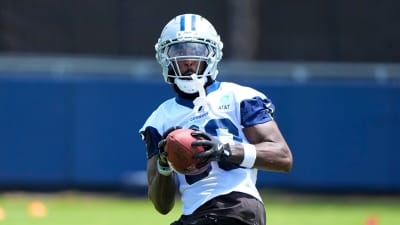
Junior hockey was made for the small town. No one else embraces a sports team like a community with nothing better to do. It’s a big reason why I started my journey to see every Western Hockey League (WHL) team in their home arena; not only would I be able to see some less well-known towns across the prairies, but I could also experience the intensity that only a small town can bring.
However, that might not be the case anymore. Back in the early days of the league, the WHL was portrayed as a gritty, rural league in stark opposition to the big-city teams out East. But, using definitions from Stats Canada, the WHL only has one team in a small population center, while 12 teams play in a large city, the same number as the Ontario Hockey League (OHL). Technically speaking, the Quebec Maritime Junior Hockey League (QMJHL) is more rural than its western counterpart, currently hosting two teams in cities of less than 35,000 people.
Despite ever-growing populations, there are still places across the WHL that have held onto what makes the league special, and none have done it better than Prince Albert. At 38,000 people, it’s the third-most populous city in Saskatchewan, but it feels a lot smaller than that. The ‘Gateway of the North’ is very much out of the way of pretty much everything and is the last place to stop before you enter Saskatchewan’s dense forests and rich lakes. Due to its isolation, it’s gained a reputation as a tough place to live, but that’s just made the community that much tighter, and no one supports a junior hockey team better than a tightly knit community.
Raiders History
Just like there isn’t a better example of a WHL city than Prince Albert, there aren’t too many better teams that embody the rebel spirit of the league better than the Raiders. They’re one of the most recognizable teams in the WHL with striking green, black, and gold jerseys and have a history of being incredibly tough to play against. The North Saskatchewan team has come to reflect not only the fighting spirit of the prairies but also the WHL’s turbulent history, trying to establish itself despite facing immense outside pressure. That connection has made the name ‘Raiders’ synonymous with the WHL, just as junior hockey is in small towns.
And yet, the Raiders almost didn’t exist.
When Prince Albert was granted an expansion team from the Saskatchewan Junior Hockey League (SJHL) in 1971-72, the ownership group held a fan vote to determine the name. When all the votes were counted, the most popular choice was ‘Mintos,’ with ‘Raiders’ coming in second. However, the name ‘Mintos’ was already owned by someone else, and to avoid legal issues, the new ownership group went with the second-best choice.
Yet that still doesn’t answer the question – why Mintos?
The name’s origin dates all the way back to 1898, when Gilbert Elliot-Murray-Kynynmound, the fourth Earl of Minto, was named the eighth Governor General of Canada. Lord Minto was a big sports enthusiast. He donated a lacrosse trophy in 1901, which he called the Minto Cup, and founded the Minto Skating Club in 1904 in Ottawa. But he also loved to tour Western Canada, including Prince Albert, where he made several visits over his tenure as Governor General. Because of his involvement in the city’s sports scene, Prince Albert decided to name its senior hockey team after him in 1909, creating the first Prince Albert Mintos hockey club.
The Mintos put together a Stanley Cup bid in 1911, but before they could challenge the Ottawa Senators for it, they had to prove they were the best team in the West. That meant getting past the Port Arthur Bearcats, the top team in Manitoba, and unfortunately, they couldn’t do it. It probably worked out, though, as the Bearcats went on to lose 14-4 against the Senators, with future Hall-of-Famer Marty Walsh scoring 10 goals in the contest. After 1914, the Stanley Cup became a playoff trophy between the best Western and Eastern teams, forcing the Mintos to turn their attention to the Allan Cup, given to the best amateur team in the country. In 1915, they challenged the Melville Millionaires but lost the two-game series 15-13. That was the last challenge they made, and by the 1930s, they ceased operations.
But the Mintos returned following the collapse of the SJHL’s Black Hawks in 1947, with the name being resurrected as a junior team in the brand-new North Saskatchewan Junior Hockey League (NSJHL) for 1948-49. Although the new Junior Mintos finished first in the first two seasons of operation, they never won a Centennial Cup and regressed significantly over the following years. In 1961-62, they finished at the bottom of the standings, and to add insult to injury, the original Minto Arena burned down in the middle of the season. They finished their season in Dauphin, Manitoba, but with no arena to return to, they once again ceased operations.
So, when the SJHL came calling again in 1971-72, the Mintos’ name was very familiar to most hockey fans across the city. However, the previous owners of the Mintos’ name hadn’t officially disbanded, and thus, the naming rights were still owned by the old franchise. That meant, to avoid any potential legal issues, the owners decided to skip the popular choice and go with the second-best option.
Thankfully, the Raiders became a Junior A powerhouse right out of the gate. They finished in third place in their inaugural season; by their third season, they won the Hanbidge Cup, the league’s championship trophy, and were a runner-up the following season. Then, starting in 1975-76, the Raiders went on one of the most dominant runs in Junior A history, winning the Hanbidge Cup seven consecutive times, claiming seven ANAVET Cups as the best Junior A team between Manitoba and Saskatchewan, as well as four Centennial Cups as the best Junior A team in Canada.
However, their success also attracted the attention of the WHL, which offered them a chance to face tougher competition as an expansion franchise. The Raiders had dominated the Junior A ranks, so they decided to move over to Major Junior in 1982-83, and just three years later, they took home the Ed Chynoweth Cup as the league’s champions. Success hasn’t come as easily since their early days, with just one Chynoweth Cup since then in 2018-19, but they’ve remained a competitive team year in and year out.

But even after the Raiders were founded, the Mintos never really left. In 1977, the Raiders were briefly partnered with a local AAA U18 team called the Midget Minto Raiders, but the name remained until 1995. The AAA squad has arguably been the most successful team ever to use the Minto moniker, winning three Telus Cups and seeing some notable alumni pass through, including Braden Schneider, Dustin Tokarski, Connor Ingram, and Josh Manson, who brought the Stanley Cup to the community he grew up in.
Although the Raiders are no longer officially connected to the Mintos, the name remains a cornerstone in Prince Albert. Because of one man’s mission to expand hockey’s influence in the prairies, Northern Saskatchewan has one of the most successful junior teams in the province’s history.
Franchise Leaders:
- Most Points (Total): Dan Hodgson (1982-85) – 493
- Most Points (Season): Dan Hodgson (1984-85) – 182
- Most Goals (Season): Dan Hodgson (1984-85) – 70
- Most Games Played: Sean Montgomery (2014-19) – 345
- Most Wins (Total): Ian Scott (2015-19) – 87
- Most Wins (Season): Ian Scott (2018-19) – 38
- Retired Numbers: 3 – #4 Dave Manson; #9 Mike Modano; #16 Dan Hodgson
- Highest Drafted Players: Mike Modano, 1st (Minnesota, 1988); Chris Phillips, 1st (Ottawa, 1996); Leon Draisaitl, 3rd (Edmonton, 2014); Steve Kelly, 6th (Edmonton, 1995), Scott Hartnell, 6th (Nashville, 2000)
Art Hauser Centre
As per usual, Chad and I arrived at the rink about 30 minutes before puck drop and were pleasantly surprised by the cleanliness of the parking lot. Normally, this might not be something you notice, but for Chad, who uses a wheelchair, having a clean, easy pathway to the arena entrance is a massive upgrade from the Saskatoon Blades’ parking lot, which has large sections of gravel that can get full of puddles after rain or snow. Of course, everything is covered in snow in January in Saskatchewan, but Prince Albert’s lot was well plowed despite several recent dumps. It may be a minor detail, but it sure made a good first impression on us.
The exterior was also surprisingly nice and didn’t reflect its age as much as Regina’s Brandt Centre, which is six years younger than the Art Hauser Centre. Part of that was thanks to a campaign nearly 20 years ago to give the team a much-needed facelift. Originally built in 1971 and called the Prince Albert Communiplex, a WHL review in 2003 found the arena fell short of the league’s standards. Three years and $6.5 million later, the Communiplex was transformed into the Art Hauser Centre, named after the top donor in the community-driven ‘Bring Back the Magic’ campaign.
You can see the connection to the community when you first enter the arena and are greeted by the Johnny Bower Lobby, named after arguably Prince Albert’s most famous hockey alumnus, along with a large bronze statue of the Toronto Maple Leafs goalie. He made his first public appearance in 30 years when that statue and lobby were unveiled in 2007.

However, getting to our seats was a bit more challenging. The lobby floor is at ice level, so we had to find the elevator to get us up to the top level, where they put the accessibility seats. They also don’t have any companion seats, which I was unaware of when I purchased the tickets online a couple of weeks earlier, and I simply bought two accessibility seats beside each other. But because the labelling on the website was poor, I phoned ahead to make sure I had purchased them correctly, which I had not.
After first phoning the wrong office, which was apparently the one across the hall from the Raiders, I learned that companion seats were in the row in front of the accessibility seats. Thankfully, the ticket office still had one available in front of one of the ones I bought, so they reserved it for me for no charge. So, despite the poor labelling on the website, the people at the office were incredibly helpful.
Despite the initial hangups, the Art Hauser Centre is truly the best of both worlds of junior hockey. The lobby is fresh, clean, and easy to navigate, and there’s plenty of room at the food stalls, allowing people to pass by without clogging the walkways, an issue both Saskatoon and Regina can have when it’s full. But then you’re transported back to the early days of the league, to cold wooden buildings that placed fans nearly on top of the players. It gives the arena a nostalgic, small-town feel, much like the experiences I remember as a kid, with fans just there to watch some great hockey at affordable prices.
Food and Extras
Summary
- Tickets – $26 plus fees on SaskTix.ca ($17 for standing tickets)
- Hat – $35-$45
- Jersey – $129
- Puck – $10
Whereas Regina and Saskatoon had multiple options for in-game food, Prince Albert had just one kiosk with multiple open windows. The food options were pretty standard arena fare that reminded me of my minor hockey days: burgers, fries, chicken tenders, hot dogs, and the like. But their prices were more than fair; I ordered a cheeseburger, fries, and drink combo, which came in at just $11. The burger was served with just cheese, and I couldn’t find any condiments to put on it, so I ate it plain. The fries, served in the classic crinkle-cut, were also very plain. But the burger meat was seasoned well and brought me back to my minor hockey days in Southern Alberta, where the burger was hot and greasy, just as it should be.
Chad decided to try the dry ribs, the arena’s only unique offering, and they turned out to be a good choice. They were roughly the same price as my combo, but didn’t come with fries or a drink. Still, they were crispy and full of flavour, and although some dipping sauce would have been nice, it’s a minor complaint.
My favourite souvenirs tend to be small collectables; I picked up a locally produced pack of hockey cards from Saskatoon and grabbed a mini-stick from Regina. I also picked up a few freebies while I was there, which I much prefer, but those are more difficult to predict. If you aren’t at the right place at the right time, you’ll never again see those promotional items, making them both highly collectible and incredibly difficult to acquire.
With all that in mind, I found myself drawn to a hoodie at the Raiders’ store. I generally avoid clothing, as it can be overpriced and not very unique between teams. Even hats, which offer more area-specific designs, often start around $40, which feels too expensive. That was the case with the hoodie I had my eye on, which priced out to about $70. However, it featured the team’s one-day-only logo, the Lake Country Cobra Chickens. As a resident of Saskatoon, I couldn’t justify buying a toque or shirt with a Raiders’ logo on it – even though they were very cool – but a promotional logo that had few connections to the provincial rival seemed like the perfect balance.
Jan. 26, 2024 – Prince Albert Raiders vs Saskatoon Blades
When Chad and I planned on going up to see the Raiders, the only stipulation he made was that they had to be playing the Saskatoon Blades, so we just picked the first day that worked for us. The two teams meet up regularly throughout the WHL season, leading to the hotly contested Highway 11 rivalry, which always creates some memorable matches.
Little did we know that the game we chose was an extra special meeting between the two rivals. When we got to our seats, I noticed that the scoreboard displayed the Lake Country Cobra Chickens instead of the Raiders. I was not aware of any sort of name change, so I started googling and, sure enough, the Raiders had undergone a one-day rebrand, following in the footsteps of the Lake Diefenbaker Slough Sharks and Wheat City Walleye.
Cobra Chickens: feared and terrorizing monarchs of the Canadian wilderness! They will be even more menacing when they hit the ice in @TheWHL action, as the @PARaidersHockey will rebrand for one night as the Lake Country Cobra Chickens on January 26th! @icethetics@sportslogosnet pic.twitter.com/xJkzZTK9Xd
— Taylor Vause (@wizardofvause) January 20, 2024
My frantic research also revealed little behind the name change other than entertainment. A ‘cobra chicken,’ for those unaware, is a slang term for a Canada goose, referencing the bird’s long neck, defensive hiss, and spite for all living things. The creators wanted to choose an animal that represented northern Saskatchewan, an area with a large number of lakes (hence, Lake Country), and they couldn’t find a better (or funnier) fit than it. The only thing better than the name was the logo, which featured an angry goose in a hockey helmet.
The players seemed to agree, because the Raiders, sorry, Cobra Chickens jumped out of the gate, getting a quick power-play goal less than three minutes into the game. But, less than 10 minutes later, the Blades fired back, getting their own power-play goal to even the score. That didn’t take any wind out of the Cobra Chickens’ sails, though. Out of the 21 other teams in the league, there’s no one that Prince Albert likes beating more than Saskatoon, and Sloan Stanick fired a beautiful goal top shelf to put Lake Country back up by one.
Despite being a Blades fan, it was tough not to get caught up in the excitement of the crowd every time the Cobra Chickens scored. Despite having only 2,709 fans in the building, more than 1,000 fewer than the Blades had against the Calgary Hitmen, it sounded so much louder. Nearly everyone in the stands was repping a jersey or a green shirt, and they took every opportunity to heckle Saskatoon when they were in their own end. Prince Albert may be a small town, but their passion for the team rivals some of the biggest cities in the league.
The game was constantly back and forth, and despite a handful more goals, the score was still tied at the end of the third period, so I decided to head up to the standing area so I wouldn’t have to turn around and talk with Chad anymore. To my surprise, even though my seat was just a row below the top level, the view was even better when I moved. My seats weren’t bad by any means, and it felt like I was right on top of the action whenever the play came close, but you could clearly see the whole ice without anyone impeding your view. It makes sense as to why I saw so many fans standing for the whole game instead of sitting; it’s the best view in the house. If I go back, I’d strongly consider buying a standing ticket instead.
I also took the opportunity to chat with a local guy who was also standing up top. He was roughly the same age as I was, so I asked what brought him out to the games. His answer further confirmed the strong connection to the community the Raiders had. He had attended games ever since he was in junior high, since it was the thing that everyone did back then. The seats were cheap and the hockey was great, and even though he couldn’t recall any notable players from that era, he still kept coming back. Now married with a couple of kids, he sees many of his old high school friends at the games, since they have also kept coming back with their families.
Of course, like their Saskatchewan rivals, Prince Albert has also discussed building a new arena in the city’s downtown. It is, after all, over 50 years old, which is ancient among arenas. But does it need it? The fan waved his hand around the building. Even though the Blades, one of the WHL’s best teams and a local rival, were in the building, the place didn’t sell out. This is who is coming to the game, night in and night out, and these people don’t need a brand-new arena. They like what they have. I get it.
The Cobra Chickens, despite lagging back in the standings, managed to defend the tie for the entire overtime, forcing the game into a shootout. I was definitely getting my money’s worth, and then to see Stanick score the game-winner and hear the crowd erupt was incredible. He was an easy first star, with goalie Max Hildebrandt getting the second for turning away 41 of 45 shots. The Blades were tossed a bone with the third star, Brandon Lisowsky, who scored twice, including the game-tying goal. That gives the home team a 3-0 record in the journey so far.
After the game ended and everyone began to file out of the arena, I thanked the guy for his time and told him what I was attempting to do with all these questions. He thought that was interesting and immediately wanted to know which had been my favourite arena so far. I thought for a second. Saskatoon was the big city experience, bringing high levels of entertainment for the whole family. Regina was smaller, bringing a more intimate experience while also taking pride in their past. Prince Albert didn’t have either of those things, and their building was the oldest and most in need of an upgrade by far. So I was honest with him.
Prince Albert has been my favourite stop so far. This whole experience has been a hockey fan’s dream, and I’m convinced this is what small-town hockey was supposed to be.
More must-reads:
- Could Penguins ask Sidney Crosby to waive no-movement clause amid rebuild?
- What Connor McDavid's discount extension means for Oilers
- The 'Passing leaders by NFL team' quiz
Breaking News
Trending News
Customize Your Newsletter
 +
+
Get the latest news and rumors, customized to your favorite sports and teams. Emailed daily. Always free!








